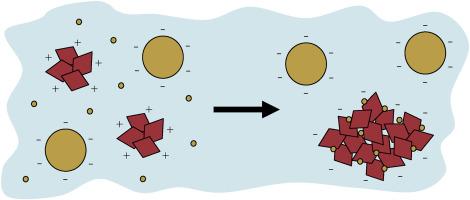A contrast variation SANS and SAXS study of soil derived dissolved organic matter, and its interactions with hematite nanoparticles
Abstract
Soil derived dissolved organic matter (DOM) is an important component of the carbon cycle and influences numerous biogeochemical processes, including the formation of mineral-organic associations. DOM ranges in size from small organic molecules to macromolecules and colloidal aggregates. In this study we have used small angle neutron (SANS) and X-ray (SAXS) scattering to characterize the colloidal DOM fraction from the organic layer of a boreal forest soil, and its interactions with hematite (α-Fe2O3) mineral nanoparticles. Comparison between SAXS and contrast variation SANS patterns revealed that the scattering form factor of the colloidal DOM aggregates was essentially independent of the scattering contrast, implying that the colloidal aggregates have an essentially homogeneous chemical composition, down to the nanometre length scale. Variation of the D2O/H2O ratio of the solvent yielded a SANS intensity minimum at ca. 40 vol % D2O, which was consistent with colloids composed of mainly polysaccharides. At pH 5.5 the pure hematite nanoparticles were colloidally stable in water and characterized by a ζ-potential of +25 mV and a hydrodynamic radius of ca. 70 nm. In the presence of DOM, the hematite nanoparticles lost the colloidal stability and aggregated into larger clusters, displaying a negative ζ-potential of ca. −25 mV. The charge reversal suggested that negatively charged polyanions of DOM adsorbed onto the hematite particles, possibly leading to bridging flocculation. Our results suggested that mainly low molecular weight components induced hematite aggregation because no or very limited interactions between DOM colloids and hematite were detected.


 求助内容:
求助内容: 应助结果提醒方式:
应助结果提醒方式:


